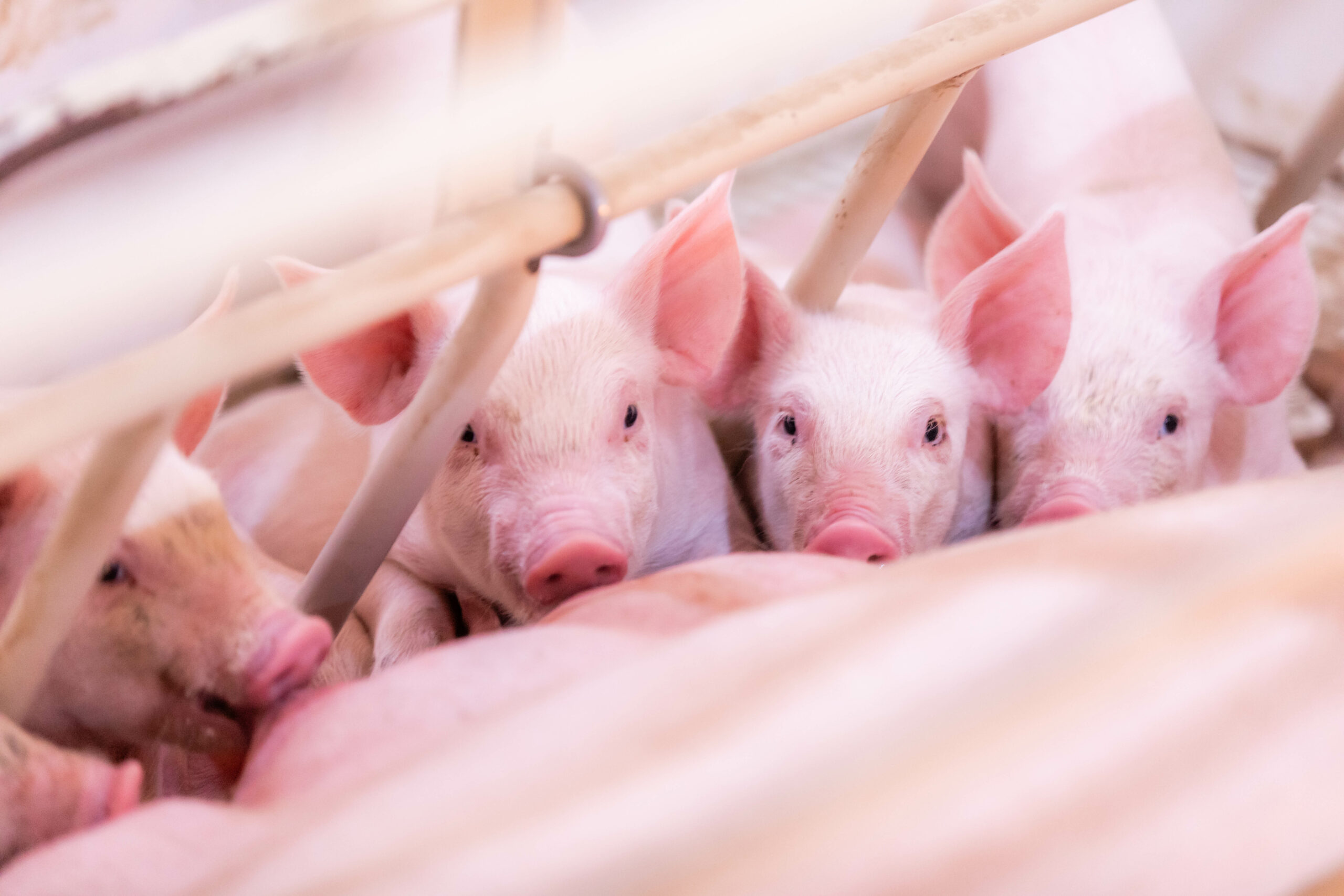Written by: Bart Borg
Nutrition and feeding practices for the lactating sow are always important to pay attention to but are critical to review and possibly adjust as we get into the heat of the summer months. Wean weight has been shown to have a large influence on downstream pig performance through increased weight gain, reduced mortality during grow-out and improved feed efficiency. The greatest impact on lactation performance for a diet that is generally well balanced nutritionally is through feeding practices that will increase the pounds of feed consumed. However, even if solid feed intake enhancing methods are in place there will many times be a need for adjusting the nutrient content of the lactation diet during summer months due to heat related feed intake depression.
Figure 1 provides an example of the relationship between lysine intake and the rate of growth of the litter. In simple terms, provide the sow with the nutrients she needs to produce milk amounts that challenge her genetic potential and the pigs nursing her will respond with added weight gain.

Figure 2 also shows an important concept to remember. Very rarely do we meet the pig’s potential for growth in what they are getting from the sow. This should be the encouragement that we need to do two things related to the lactation diet. The first is to assure feed intake is being maximized and the second is to assure the diet is correctly formulated for the average intake of the sow herd.

Some considerations for feeding practices could be wet feeding, multiple time per day feeding, adjustment of feeding time during the summer to assure fresh feed (clean feeders of any feed beginning to sour) is always available when the sow wants to eat and assurance that an overabundance of water is always available. It would also be a time that minimizing diet changes may be important to reduce the time that the sow will spend in readjusting to the new diet while most likely having a reduced daily intake.
Nutritionally, I’ll focus on discussing lysine intake but will use that as the description for all amino acids and other nutrients that may be of concern. The lysine content of the diets should be established while considering the average daily feed intake of the sows and the number of pigs being weaned. With modern genetics, using a target intake of 60 grams of digestible lysine (SID lys) per day as a minimum is a good place to start. This means that if your diet contains .95% SID lys the intake level of your sows needs to average 14 lbs/head/day. If intake is more, the lysine level can be reduced, if it is less the lysine level should be greater than .95%. Summer heat will many times reduce the average by 2 lbs/hd. As an example, if intake is reduced by 2 lbs, the lactation diet will now need to be 1.1% SID lys to meet the 60 gram per day intake target.
Another area of consideration for lactation feeding is that of the gilt. Gilts will many times have average daily intake levels that are at least 2 lbs less than the herd average daily intake. This deserves consideration for a diet adjustment or supplementation if possible. Figure 3 shows the average daily gain response of the gilt litter when gilts are fed diets ranging from .95% to 1.25% SID lys.

As you evaluate and measure daily intake levels to fine tune the lactation diet it’s important to remember the influence of wean age on the daily intake average. Table 1 shows an estimate of feed intake change at various wean ages for P2+ sows and for gilts.

Our target for lactation feeding is to maximize feed intake of a diet that is suitable for that intake level so that we can maximize the pig’s potential for daily gain. Assuring that quality ingredients are used, corn micron size is at the targeted level (600 microns for roller mill ground corn) and that we are doing all we can to encourage additional feed intake is important, especially during the summer months. Please contact your Standard Nutrition Consultant if you are interested in reviewing the details of a potential lactation diet adjustment.
